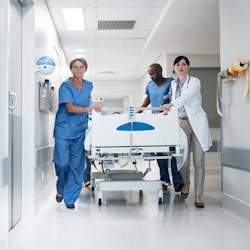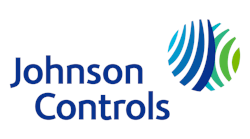This article originally appeared in the April 2023 issue of Security Business magazine. When sharing, don’t forget to mention Security Business magazine on LinkedIn and @SecBusinessMag on Twitter.
Over the past decade, healthcare settings have unfortunately become hotbed locations for emergency situations. According to the NFPA, U.S. fire departments respond to approximately 5,700 structure fires in healthcare facilities each year. At the same time, violence in healthcare has skyrocketed, with research from Press Ganey revealing two nurses were assaulted every hour in Q2 of FY22 in the United States, amounting to more than 1,700 attacks a month.
Healthcare workers are putting their health and safety on the line to care for patients, and the environments they operate in must be designed to put their protection first.
Strategic technology implementations in healthcare settings can provide an advanced degree of preparedness that makes a difference in an emergency, and even save lives. For many hospital leaders, mass notification solutions are at the top of the list.
Serving Unique Healthcare Needs
Healthcare facilities are unique environments with distinct needs. They can be expansive, maze-like spaces often made up of multiple buildings spread out across a large campus property. They also welcome a wide variety of occupants – including physicians, nurses, admin staff, facility teams and of course patients and their loved ones – all of whom are pulled in a million directions every day, creating a chaotic environment. Even further, they require a patchwork puzzle of authorizations that can differ from one room to the next, one room can be a patient intake space that is open to the public and the next can be pharmaceutical storage that requires high security.
Consider how these attributes factor into an emergency such as an intruder incident in the ER. The massive nature of a hospital means employees in separate departments, despite their close vicinity, might not even be aware of the situation, impeding efforts for an orderly evacuation and putting them at risk. By the time they are made aware, the intruder may have moved closer towards their location. At the same time, occupants in labor and delivery two buildings over may not even need to know about the incident, as it would cause needless panic.
In addition, the high volume of patients and visitors coming and going throughout the day means there are countless occupants who are unaware of the hospital’s emergency response policies, placing the onus on staff members to lead the evacuation or lockdown themselves.
Finally, the differing layers of authentication throughout a hospital could create confusion and bottlenecking as occupants attempt to evacuate. These challenges can all contribute to a lengthy and uncoordinated emergency response that ultimately puts occupants in danger and can impede local first responders’ response efforts.
How Mass Notification Streamlines Emergency Response
Mass notification solutions can address these issues to improve emergency outcomes. Leveraging a wide variety of systems like voice-enabled fire alarms, duress stations, loudspeakers, electronic messaging displays and SMS alerts – all united and controlled from a single interface – healthcare facilities can mobilize an efficient emergency response in seconds.
For instance, consider the intruder incident in the ER. A healthcare employee can discretely press a duress alert button to initiate the emergency response. All occupants, from employees to patients to visitors, regardless of their location on campus can receive an SMS text alert on their mobile device with evacuation or lockdown instructions. This removes the need for staff members to take the lead and potentially make an error in the heat of the moment, such as accidentally leading occupants towards the danger. In addition, these instructions can ensure occupants take the most efficient course of action, ensuring they don’t bottleneck in areas that require an advanced level of authentication to pass through.
Two-way mass notification communication can be critical on a massive hospital campus. Occupants close to the incident location will need different information than those further away. Depending on the situation, an individual in a separate building may not need to evacuate at all, especially if they are administering life-saving care. To avoid unnecessary panic and confusion, two-way communication enables security or facility managers to rapidly evaluate the situation and customize the notifications that are sent out accordingly. This allows them to be more accurate in their messaging and avoid sending alerts to individuals who may not need them.
In areas of the hospital that are loud and distracting, leading occupants to possibly ignore a text message, loudspeakers and visual messaging boards can break through the noise – literally – to alert all occupants to the situation. These solutions also enable healthcare facilities to effectively communicate with sight or hearing-impaired individuals. In addition, the redundant nature of modern mass notification systems means if one system fails to reach occupants, another is present to compensate, ensuring reliability when it is needed most.
While the mass notification solution executes an orderly internal response, it can also automatically alert local police to the situation with detailed information about where the incident is occurring in the expansive campus. Integrations with video surveillance systems provide first responders with more visual context and even audio information about the nature of the emergency, allowing them to plan an appropriate response.
Selecting the Best System for Your Customer
Comprehensive mass notification gives physicians, nurses, staff members and patients the peace of mind that their environment is prepared for the unthinkable. With a single press of a button, any healthcare employee can initiate a fast, widespread and organized emergency response.
Because every healthcare facility is different, including the threats they face, no two mass notification systems will be alike.
Healthcare leaders who are ready to implement these technologies should work with integrators to perform a rigorous evaluation of existing infrastructure and security goals to identify any gaps in the systems. From there, they can work to implement a mass notification system that aligns with their needs.
These flexible solutions can be easily scaled according to campus size, needs and budget, and should be able to not only be easily integrated together, but actively inform each other. Once these solutions are in place, they must be regularly tested for performance.
Julie Brown is VP of Industries and Customer Experience for Johnson Controls. Greg Parker is VP of Innovation and Portfolio Management for Johnson Controls. Request more information about the company at www.securityinfowatch.com/10547368.




